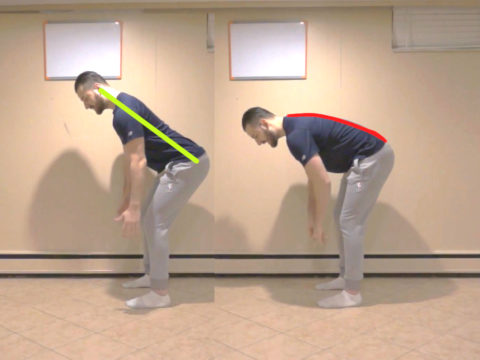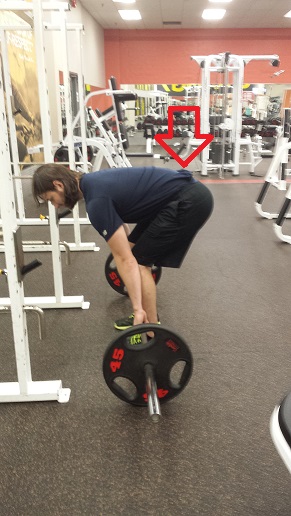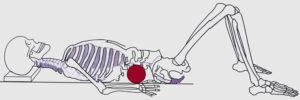
7 Things I’ve Learned from Training Clients with Low Back Pain
Throughout the past five years, I’ve had the opportunity to work with a wide variety of clients and individuals with low back pain. Some of these individuals have involved your everyday 9 to 5 office worker with low back pain, clients with spinal surgical interventions, and professional basketball, hockey and mixed martial athletes with severe discogenic back issues. I’ve also been through a severe lower back injury myself, managed my own recovery and returned to weightlifting and playing hockey.
The experience of rehabbing my own lower back troubles, as well as working with a wide variety of clients with low back pain has provided me with tremendous knowledge about the low back and has set the foundation for me to help others work around a lower back injury. In today’s post, I’m sharing with you 7 important things that I’ve learned over the years from training clients with lower back pain, as well as my experiences going through a severe low back injury myself.
1. Everyone’s Lower Back Pain is Different
This is probably one of the most important things that I’ve learned during my entire training career. Everyone’s lower back pain is different and is caused by different mechanisms. For example, people may have low back pain caused by a bulging/herniated disc, an endplate fracture, osteoarthrosis, spondylolysis, spondylolisthesis or even in extreme case a tumour (physiological cause). While it is important to know that there are many different causes of low back pain, what is arguably more important to understand is the associated injury mechanisms and pain-triggers of each injury.
People with bulging/herniated discs tend to be flexion intolerant (trouble with bending over) and will have issues with seated activity, whereas people with facet joint osteoarthrosis, spondylolysis, spondylolisthesis tend to be your extension intolerant (trouble with back bending) individuals. Also, people with endplate fractures will be your compression intolerant individual’s and will likely have trouble with heavy squatting or deadlifting. While these are just a few examples, the important takeaway is that it’s important to understand the injury and injury mechanisms at play for one to get an understanding of how to train around a lower back injury.
2. Movement is King
Movement is an absolute deal breaker when it comes mechanically (non-physiological) related low back pain. If you get individuals to move the right way, they will almost always notice improvements in their symptoms, whereas if you get individual’s to move the wrong way, you can trigger their symptoms to become significantly worse. A good example can be seen with herniated disc individual’s who are typically flexion intolerant. Getting these individuals to practice bending at the hips versus the spine and limiting seated based activity is critical. Often times, people don’t know how to bend with their spine properly, and this is what gets them into trouble in the first place.

The above photo represents bending with the hips (left side) versus bending with back (right side). Bending with the hips will help spare the low back and reduce the incidence of injury.
3. Everyone’s Need’s and Exercise Program Will Be Different
Like I mentioned earlier how “everyone’s lower back pain is different,” the same applies to exercise programming. Everyone’s exercise program will be different since the “needs” of each individual will vary from person to person. One size fits all approaches do not work when it comes to training clients with lower back pain.
4. Avoid Repeated Cycles of Loaded End Range Lumbar Flexion and Extension
Performing end-range lumbar spinal flexion/extension exercises under load are the exact way to create a lower back injury (Callaghan & McGill, 2001). Doing high-volume sit-ups or hyperextension’s would be best avoided to spare the low back from injury. Also, this is “why” so many people throw their low back out when doing a deadlift with horrible technique (example in the photo below). Practicing good weightlifting technique and avoiding end-range flexion/extension will go a long way in maintaining good spinal health.

The above photo represents a poor deadlift set-up position. Continuously pulling from this spinal position will result in a bulging or herniated disc.
5. Be Careful with NSAID’s or Pain-Relief Medication when Training
One of the reasons so many people don’t see improvements in their symptoms is that they are consistently taking NSAID’s or pain-relief medication and moving into pain-provoking positions without even knowing it. For example, if an individual had pain with sitting, they may quickly reside to taking some sort of pain-relief medication to help get through the activity of sitting. While this is a temporary solution to helping individual’s get through an activity (e.g., sitting), they are only making their injury worse in the long run. Continuing to assume the pain-provoking position (sitting in this case) is only going to continue to pick at the scab. Individuals are better off identifying their tolerance levels to activities and movement patterns before taking NSAID’s or pain-relief medications.
6. Exercise in the Afternoon or Evening is Often Best for People with Lower Back Pain
Often people with lower back pain will complain that their symptoms are worse immediately upon waking up or early in the morning. While thanks to previous researchers, Adams, Dolan & Hutton (1987) there is an actual reason for this. Adams, Dolan and Hutton (1987) reported that the bending stresses on the lumbar spinal discs and ligaments of the neural arch are significantly greater in the early morning when compared to later in the day. The increase in bending stresses is a result of the added fluid in the spinal discs during an overnight sleep that creates a more pressurized spinal disc early in the morning. The added fluid and pressure in the spinal discs create a “stiffer” spine, making it harder to bend and move. As a result of these findings, Adams, Dolan & Hutton (1987) concluded that individuals are at greater risk for lumbar spinal disc and ligament injuries during bending movements early in the morning.
Also, to follow up on Adams et al., (1987) research, Snook, Webster & McGorry (1998) found that individuals with low back pain who removed early morning spine bending movements found improvements in their symptoms. As you can see avoiding early morning spine bending is very important in preventing an injury such as a bulging or herniated disc, and it is even more important for individuals with existing low back problems to avoid. This is one reason why I am not a fan of early morning exercise for people with low back pain. Simply, changing exercise training sessions to later in the day or evening for lower back pained individual’s may prove to be significantly beneficial in alleviating symptoms and helping individual’s through a workout.
7. Maximize Your Training Capacity
People that sit all day and then go do heavy deadlifting or squatting are not exactly doing themselves any favours for preventing an injury or maximizing performance. When an individual sit’s all day they are robbing their low back of its capacity to train, as there is constant deformation occurring on the lumbar spine from the “creep” effect (e.g., think hanging a weight from a tree branch all day).
People with existing or previous lower back troubles would need to be extra careful of their daily routines and should try to spare the low back as much possible before training. Doing little tasks throughout the day such as playing a pick-up game of basketball, sitting for a prolonged period, or even doing some gardening work can all decrease performance when the time comes to train.
Final Thoughts
To recap, everyone from everyday office workers to professional athletes require an individualized training program and strategy to work around their lower back pain. Not one case is identical to another, and each case should be treated uniquely. If you can understand that, then you are headed in the right direction.
References
Adams, M. A., Dolan, P., & Hutton, W. C. (1987). Diurnal variations in the stresses on the lumbar spine. Spine, 12(2), 130-137.
Callaghan, J. P., & McGill, S. M. (2001). Intervertebral disc herniation: Studies on a porcine model exposed to highly repetitive flexion/extension motion with compressive force. Clinical Biomechanics (Bristol, Avon), 16(1), 28-37.
Snook, S. H., Webster, B. S., McGorry, R. W., Fogleman, M. T., & McCann, K. B. (1998). The reduction of chronic nonspecific low back pain through the control of early morning lumbar flexion. A randomized controlled trial. Spine, 23(23), 2601-2607.
Thumbnail Image Licensed from “glisic_albina/stock.adobe.com”











